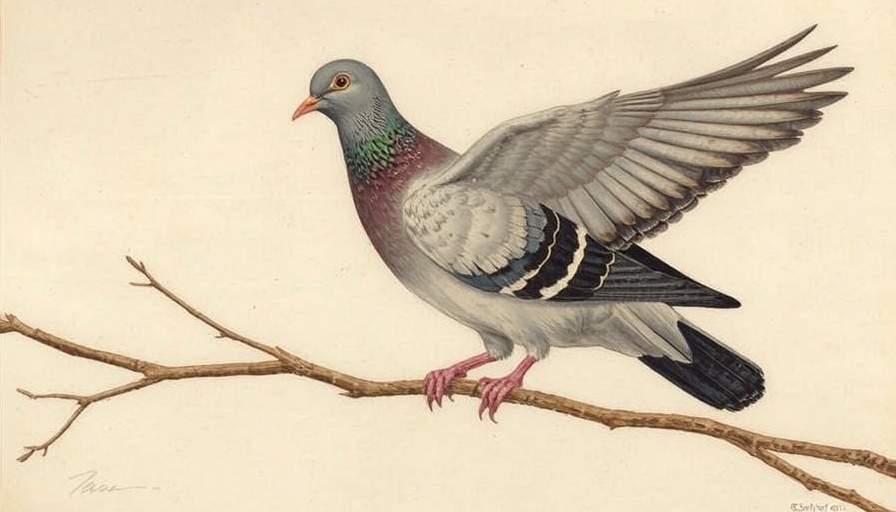
The Legacy of Passenger Pigeons
Once a common sight across North America, the Passenger Pigeon embodied the astonishing might of nature. In the early 1800s, these birds were estimated in numbers that could surpass one billion, forming flocks that darkened the sky as they flew. However, the resources they depended on dwindled, leading to their tragic decline. The Passenger Pigeon's extinction is not merely a historical fact; it serves as a powerful reminder of the impact that human actions can have on wildlife.
Martha: The Symbol of Extinction
Martha, the last known Passenger Pigeon, was a prominent figure at the Cincinnati Zoo. Her life in captivity symbolizes both the species’ departure and our responsibility towards conservation. Born in 1856, Martha witnessed various attempts at species revival but ultimately succumbed to old age on September 1, 1914. Her story has transcended time, encouraging current conservationists to reflect on the lessons of over-exploitation and habitat loss.
Lessons from the Past: A Call to Action
While the extinction of the Passenger Pigeon is a somber note in the history of environmental efforts, it inspires action in today's world. The preservation of bird species is crucial not only for biodiversity but also for the ecological balance of our planet. Conservation organizations encourage us to engage in protecting birds through resource management, habitat restoration, and awareness campaigns.
Looking Ahead: Protecting Our Avian Friends
The tale of Martha the Passenger Pigeon is a critical chapter in understanding climate change and wildlife preservation today. It’s not just about preventing extinction; it’s about fostering healthy environments where birds and other wildlife can thrive. Each action taken today—from supporting local conservation initiatives to advocating for sustainable practices—can have a lasting impact on the natural world.
 Add Row
Add Row  Add
Add 




Write A Comment